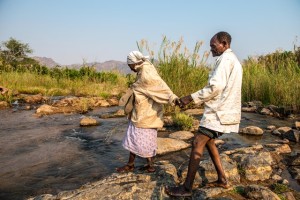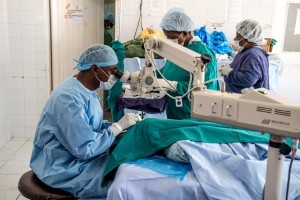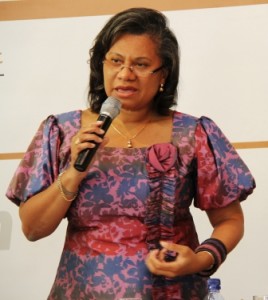“Today’s publication of the Government’s Disability Framework reflects its ambitious vision to deliver disability-inclusive development. We believe the practical steps the Government has outlined will provide a real [...]]]>
“Today’s publication of the Government’s Disability Framework reflects its ambitious vision to deliver disability-inclusive development. We believe the practical steps the Government has outlined will provide a real boost to its commitment to make its programmes systematically inclusive of and accessible to people with disabilities.
We also believe it will have a direct and positive impact on the lives of millions of people with disabilities who currently live in poverty.
DFID have rightly acknowledged that achieving their ambition will be a learning process. By committing to an annual revision of the Framework and monitoring programmes reporting on disability, DFID have outlined a clear process by which they will strengthen their approach and deliver accessible programmes. The Framework also sets out the UK’s commitment to promoting the rights of people with disabilities across the world by meeting its obligations to the UNCRPD.
We believe there are some critical steps DFID must take over the next 12 months. DFID must set out an organisational definition of disability-inclusive development, signposting what successful inclusion would look like; identify how they can increase the participation and engagement of people with disabilities in development programmes and staff training, recognising that people with disabilities themselves have the best knowledge and understanding of what is needed to be included; produce technical guidance for their staff, building on the evidence and learning available on what works; and identify indicators and align organisational targets to reflect disability-inclusion, to ensure that progress can be measured and to contribute to that growing evidence base. These steps will position DFID as an authority on disability-inclusive development at a global level. It will allow them to influence their multilateral, bilateral and NGO partners and thereby positively impact more widely on the lives of the 800 million people with disabilities living in developing countries.
Today sees the policy change that the Sightsavers’ Put us in the Picture campaign has been calling for. We believe the Framework is an essential part of the broader process needed to transform the lives of people with disabilities across the world by addressing stigma and discrimination; ensuring children with disabilities access a quality education; empowering adults to gain employment; and delivering health services that are accessible to all.
At Sightsavers, we believe these are achievable globally. This Framework puts the UK Government at the heart of that picture.”
Sightsavers works with partners in the developing world to combat avoidable blindness.
]]>Life has thrown me so many stones that I thought I would collapse under the heap.
In my early teens, I was uncontrollable. The boys and men I had sex with never stayed. The alcohol disappeared and I would sink deeper in despair. I didn’t bother about who touched me where – I was a girl for public use.
Before you judge me, listen to my story. I am one of so many girls acting in a self-harming way because of a horrible beginning in life.
From the age of six, I was sexually abused by young uncles. Incest did not exist in my world in Kabarole, in rural Uganda, and later in Kampala, the capital. Sex was a way of life, not a way of giving pleasure, love and respect.
When I reached puberty, I just went on having sex with anyone. I did not think of unwanted pregnancies, sexually transmitted diseases and HIV. I didn’t know about these things.
Worse, I shut my ears to the few health education programs available in the early 2000s.
I got pregnant at age 15. I didn’t have a clue that a baby was growing inside of me. Someone who noticed told my family. Protecting the family name, they took me to hospital and the pregnancy was terminated.
Word got around in my boarding school. Nobody talked to me. My friends abandoned me. School became hell. To be expelled, I burnt my mattress.
Out of school, I was wild and reckless. In 2008, I got pregnant again. My boyfriend left me the moment I told him I was pregnant and had tested HIV-positive during the first antenatal care visit.
I was put on antiretrovirals (ARVs) and my beautiful baby girl was born HIV negative. But I didn’t follow the instructions of exclusive breastfeeding for six
months. I had little milk and no money for food for her or for me. She acquired HIV, nearly died and started ARVs when she was eight months old.
I am happy to say she is now a healthy, bouncy five years old.
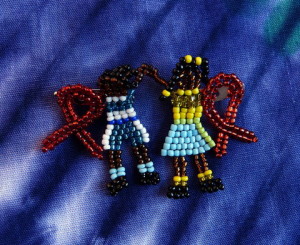
Adolescence is a turbulent time and young people need guidance to navigate it safely, says our blogger, herself a survivor of teen turmoil, who now counsels youth about HIV and unwanted pregnancies.
Turn around
This was the turning point in my life. I wanted to, I needed to live differently.
I looked around and saw so many young people getting infected, feeling miserable and dying. AIDS is the biggest killer of teenagers in Africa today.
I thought: who knows how many have gone through a hard childhood like me? I can use my experience to warn young people about AIDS and unwanted pregnancy. And for those who already live with HIV, I can help them live positively.
I can give the one thing I never had: someone to talk to, someone to guide me. A red light telling me to stop.
I have seen the impact my story has on young people every time I share it. Young people can relate to me, to my hard life. And I can relate to their daily doubts and struggles.
Sometimes I see my uncles. I have not confronted them. I have forgiven them; I can’t dwell too much on the past. I have to let go or I won’t be able to move on with life.
I believe that everything happens for a reason. My painful past was an on-the-job training so today I can help young people live healthily and safely in the times of HIV.
 Barbara Kemigisa is an HIV/family planning campaigner who lives positively with HIV in Uganda. When she is not campaigning, she dabbles in fashion design, plays guitar, composes and sings R&B songs about living with HIV with the same passion she puts in her work towards zero new infections.
Barbara Kemigisa is an HIV/family planning campaigner who lives positively with HIV in Uganda. When she is not campaigning, she dabbles in fashion design, plays guitar, composes and sings R&B songs about living with HIV with the same passion she puts in her work towards zero new infections.
This week 69-year-old Winesi March, who has been blind for two years, will undergo life-changing surgery as the world watches.
Twenty-four hours later anyone with an internet connection can rejoin Winesi and his family in rural Malawi as his bandages are removed and he sees his grandson for the first time.
There [...]]]>
This week 69-year-old Winesi March, who has been blind for two years, will undergo life-changing surgery as the world watches.
Twenty-four hours later anyone with an internet connection can rejoin Winesi and his family in rural Malawi as his bandages are removed and he sees his grandson for the first time.
There are so many neglected causes, too many forgotten needs, a world wide web full of campaigns and emergencies demanding our attention. Some broadcasters claim audiences are dropping because of what can feel like an overwhelming number of tough realities out there.
This week Sightsavers is broadcasting the story of one man having eye surgery live online to highlight that many global “issues” are straightforward and cost effective to solve. It will bring the little-known reality of what it means to live with cataract in rural Africa to front rooms, computer screens and mobile phones around the world. It will show how lives can be changed in just two days.
As head of an organisation that saves sight and prevents blindness, as well as supporting those who are irreversibly blind, my priority is to do whatever we can to ensure people in the countries where we work can get access to good eye health services. It is their right, after all. Visual impairment usually means people find working, looking after their families and even just travelling from A to B a challenge.
Although cataract surgery is a straightforward procedure we are still seeing stubbornly high levels of the problem in developing countries. Our new appeal – A Million Miracles – aims to raise enough money to support one million sight-restoring surgeries in the next three years.
The appeal is kick started with support from the UK government – they will match donations made before the end of the year as part of their UK Aid Match programme.
Treatment for cataract in the UK is widely available, yet it still affects 20 million people globally, with the majority of living in the developing world.
As campaigners we hope everyone who watches the broadcast will be as outraged as we are that not everyone has easy access to treatment, and are forced to spend years blind, when it could have been prevented. We hope everyone will share in the beautiful moment of restored sight, and joy as a family is brought together.
Winesi’s wife Namaleta has increasingly been forced to shoulder the responsibilities of strenuous farming work, running the household and taking care of the children.
When we asked Winesi how he’ll feel if his sight is restored, he said, “I’ll take up my hoe and jump up and down. When I have sight, I will run into town and buy my wife a new dress and shoes so she will look beautiful.”
His sense of excitement is infectious, and it’s amazing to think that an operation on 8 October, which may take as little as fifteen minutes, could change his life so significantly.
Our digital event is being presented by You Tube vlogger Doug Armstrong live through a Google+ hangout on Wednesday 8 and Thursday 9 October at 1.30pm UK time (8:30am EST) at www.millionmiracles.org.
Ophthalmologist Dr Gerald Msukwa will talk through the procedure and take questions from the online audience.
But Sightsavers’ work goes beyond the miracle of one man’s sight being restored. If we are to ensure that cataract operations are as readily available in Malawi, and other countries, as they are in the UK, we have to help Ministries of Health in these countries to develop health services to provide treatment for cataract, glaucoma and other eye conditions.
We need to support the training of doctors and nurses as well as providing equipment and medicines. In recent years we have worked increasingly closely with governments to ensure they have the right environment and career structures for people, and that eye care is included in national health plans.
I have visited many of the countries where we work. I’ve met people who have to travel miles to the nearest health clinic, with old broken equipment and visited hospitals with one overstretched ophthalmologist who is working around the clock close to exhaustion.
This online first will, we hope, give others a chance to visit a remote hospital in Malawi, without even leaving their desk. They will see first-hand what a profound impact they can have on someone’s life in just two days – even if they are thousands of miles away.
Sightsavers works with partners in the developing world to combat avoidable blindness. Dr Caroline Harper OBE joined Sightsavers in 2005 as Chief Executive, having made the decision to move from the corporate world into the not-for-profit sector inspired by her travels in developing countries. She also had a number of blind family members so Sightsavers mission has personal resonance for her.
]]>** Dr. Julitta Onabanjo is the Regional Director for UNFPA’s East and Southern Africa region, stationed in Johannesburg
Recently, a 14-year-old girl from Kakamega County in Kenya gave birth to a set of triplets, fathered by a boy aged 16. The phenomenon of children having babies is not limited to Kenya; it occurs [...]]]>
** Dr. Julitta Onabanjo is the Regional Director for UNFPA’s East and Southern Africa region, stationed in Johannesburg
Recently, a 14-year-old girl from Kakamega County in Kenya gave birth to a set of triplets, fathered by a boy aged 16. The phenomenon of children having babies is not limited to Kenya; it occurs in many African countries.
Fifteen-year-old Ida, from Mozambique, became pregnant when she was 13 years old while 25-year-old Mariel, from Madagascar, got pregnant when just 13 years.
Each year, 7.3 million girls under the age of 18 give birth in developing countries — of these, around 2 million are under 15.
As an African mother, I would not like my daughter, or niece – or any young girl, for that matter – to get pregnant at an early age, not just because it would compromise their life opportunities, but also because medically and psychologically, teenage pregnancy poses high risk for both the adolescent girl and her child.
The trend of children giving birth to children should not be allowed to continue. This is why UNFPA’s State of World Population 2013: Motherhood in Childhood, launched this week, addresses the challenge of adolescent pregnancy head on.
The social drivers of adolescent pregnancy in our society are well known. They include impoverishment, social marginalization and child marriage. Others are limited choices and opportunities in life, or inadequate access to sexual and reproductive health, including contraceptive information and services.
As the report notes, “Every day, 20,000 girls below age 18 give birth in developing countries,” most of them from lower-income rural households. Many of these girls are also nutritionally deficient.
Pregnancy has enormous consequences for a young girl. Broadly speaking, it alters the course of her life, seriously affecting her health, education and income-earning potential.
Pregnancy and childbirth are the leading cause of death for adolescent females in developing countries, resulting in 70,000 deaths annually. Likewise, health problems such as obstetric fistula are more likely if a girl becomes pregnant too soon after reaching puberty.
When girls leave school due to pregnancy or for any other reason, their economic prospects are jeopardised, while their opportunities in life might be severely truncated.
A call to action
Thus, addressing motherhood in childhood requires institutional and community responses, as well as individual commitment. Programmes that target the girl child need to take into account the broader social drivers of the problem.
For instance, we need to address the underlying factors of adolescent pregnancy, including gender inequality, poverty, sexual violence and coercion, child marriage, social pressures, exclusion from education and lack of job opportunities. We must also address the negative attitudes and stereotypes about adolescent girls that contribute to the problem.
An important area of concern is inadequate access to comprehensive sexuality education and youth friendly information and services where their privacy and confidentiality is maintained. Teenagers need to be fully informed on how to protect themselves from unplanned pregnancies.
Adolescents and young people also need holistic development, which focuses on creating a safe and supportive environment for accessing information, services and platforms for participation and advocacy.
Communities, including religious and traditional leaders, school authorities and social protection officers should work to protect the rights of girls in teen pregnancy and child marriage. This is where some of the conditions, norms, values and structures that perpetuate adolescent pregnancies can be changed.
Specifically, our boys and men should respect the rights of adolescent girls and not cajole or coerce them into sex. It is absolutely critical that our young people are enabled to protect themselves against sexually transmitted infections, especially HIV – the second main cause of death among young women in Africa.
And as so many adolescent girls die from unsafe abortions when choosing to terminate their unplanned pregnancies, they must be granted access to modern contraceptive and safe abortion services.
All said, our children should not be having babies. It is our collective duty to ensure that adolescent and young people achieve their full potential through quality education, health information and services, gainful employment and being protected from unplanned pregnancies and child marriage.
Now is the time to harness and invest into the resilience of our young people to achieve great dividend for the African continent.
]]>As always with rich reports like these, there is too much valuable info to squeeze into one article, so I’m making use of this space to draw [...]]]>
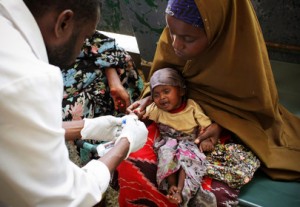
UN Photo/Stuart Price
Some may have seen my most recent article providing some highlights of a new UNICEF report on the global progress in reducing child mortality since 1990.
As always with rich reports like these, there is too much valuable info to squeeze into one article, so I’m making use of this space to draw attention to some more statistics that I think are worth mentioning.
For example:
:: Half of all under-five deaths occur in only five countries.
:: These countries are India, DRC, Nigeria, Pakistan and China.
:: 40 percent of all children dying under the age of five die within the first 28 days after birth.
:: UNICEF estimates that by 2050 one in three children will be born in sub-Saharan Africa.
Now, onto some positive news. Here are 12 former high-mortality countries that have made strides in reducing under-five mortality and are close to achieving Millennium Development Goal 4 by 2015.
Percentages are reduction:
Laos: 72 percent (MDG 4 achieved)
Timor Leste: 70 percent (MDG 4 achieved)
Liberia: 68 percent (MDG 4 achieved)
Bangladesh: 67 percent (MDG 4 achieved)
Rwanda: 65 percent
Nepal: 64 percent
Malawi: 64 percent
Cambodia: 64 percent
Madagascar: 62 percent
Bhutan: 61 percent
Ethiopia: 61 percent
Niger: 60 percent
]]>Reactions were prompted worldwide, from Time magazine to the United Nations Office on Drugs and Crime, when this small South American country said it would legalise, control and tax the marijuana market.
The government of Uruguay wants to put marijuana under state control, including local cultivation, selling to consumers over [...]]]>
Reactions were prompted worldwide, from Time magazine to the United Nations Office on Drugs and Crime, when this small South American country said it would legalise, control and tax the marijuana market.
 The government of Uruguay wants to put marijuana under state control, including local cultivation, selling to consumers over 18 years old and registering users in a data base with records of their consumption patterns.
The government of Uruguay wants to put marijuana under state control, including local cultivation, selling to consumers over 18 years old and registering users in a data base with records of their consumption patterns.
The proposal includes a maximum personal quota of 30 grams per month, assuming that any request beyond a daily gram would be considered a “harmful addiction”. In that case, the consumer should be counselled and treated.
Marijuana use is not illegal in Uruguay, but the law doesn’t establish a personal amount limit, which is at the judge’s discretion. This legal loophole typically ends with consumers in jail. Between 2006 and 2009, 681 consumers were indicted with possession of just a few grams. Official estimates count 150,000 marijuana consumers in a national population of 3.3 million.
Of course, users rely on drug dealers to get marijuana, and the act of buying is glued to the act of selling, which is illegal.
The government says it is looking for a marijuana market separate from the harmful one of ‘pasta base’ or cocaine sulphate – an intermediate product of cocaine hydrochloride processing – also known as the drug of choice for poorer classes and associated with severe addiction and an increase in violent crimes.
Marijuana is the fourth most consumed drug in Uruguay, after alcohol, tobacco and pills – all of them regulated.
While other countries have also reformed their marijuana policies, like the United States and the Netherlands, one thing is clear: The global war against drugs has failed. In Latin America, this failure came with catastrophic doses of corruption, violence and human rights violations.
Meanwhile, as the UNODC reports shows, illegal drug markets remain stable and are even expanding to new regions and products, like synthetic and genetically modified substances, which don’t substitute plant-based drugs (i.e. coca, poppy and cannabis) but widen the variety of supply.
Uruguay’s proposal brings this striking reality to the fore. If it manages to pass into law, it could be the first step in an unfamiliar field at a national policy level.
But many crucial questions remain answered.
How will Uruguay manage to embrace this legislation without breaching its commitments as a signatory party of international conventions on drug control? How will it avoid becoming the region’s weed heaven?
If the growth and violence of drug traffic is one motivating factor in the Uruguayan policy, which exposes weak performance by enforcing agencies and the judiciary, how will the state manage to enforce this new system?
For me, the most relevant questions are about young people and health.
Is 30 grams per month a fair threshold for harmful use or abuse? This weight is based on daily use of one gram. But heavy cannabis use is generally defined as daily or near daily use. While cannabis is considered a soft drug, it is far from innocuous.
If official figures are correct, more than a half of newest weed consumers are 15-17 years old. Marijuana is sold at almost every high school doorstep, with 14- and 15-year-old boys and girls smoking freely by the street. What will happen to these consumers if the state controlled the market only for adults?
An expert who works on drugs and adolescence in this country told me that most of the weed sold in Uruguay is genetically modified and the psychoactive effects are three or four times more powerful than common varieties.
The physical and psychological effects of those GMO porros (marijuana cigarettes) are difficult to absorb at such a young age, he added.
Youths are already being neglected in so many ways in this aging population country. Around 40 percent of children are born in poverty. Meanwhile, there is a strong campaign to reduce the age of criminal responsibility from 18 to 16.
In this context, Mujica’s government should avoid that passing its liberal weed policy ends up pushing young consumers to the illegal corner instead of helping them to cope with harmful use and promoting their health, freedom and well being .
President José Mujica and his aides have explained their rationale and delivered details, but the initiative has yet to be cemented in a written bill.
The government seeks to crack down on consumption and drug traffic, reducing dealers’ profits. A tax on the new product will bring resources to rehabilitation programs, but it is not yet clear if the state would control cultivation and selling or if it would issue licenses to a private and closely regulated sector.
]]>I am moving to Maputo, Mozambique, to work in health reporting. Gender Masala will remain in the IPS Gender Portal with a more collective identity, infused by several IPS writers.
I like the word transitions: it evokes [...]]]>
I am moving to Maputo, Mozambique, to work in health reporting. Gender Masala will remain in the IPS Gender Portal with a more collective identity, infused by several IPS writers.
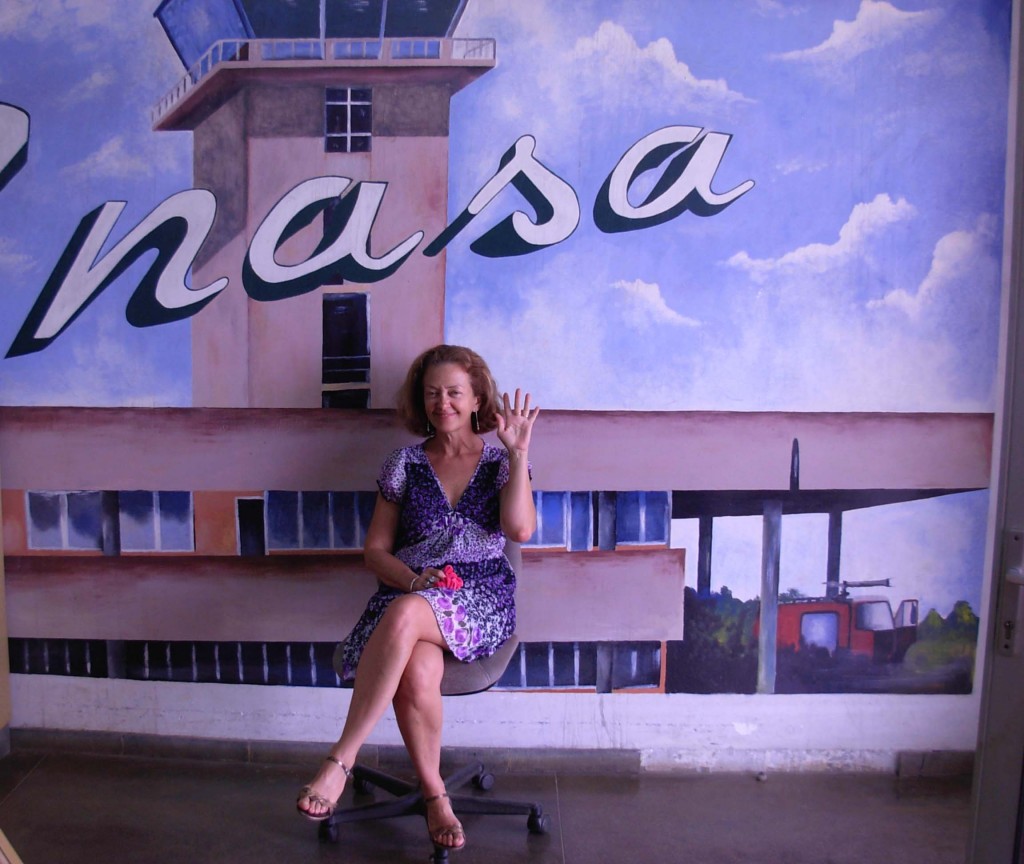
Passenger in transit: "The real voyage of discovery consists not in seeking new landscapes but in having new eyes." Marcel Proust. Pic by Claudio Corallo.
I like the word transitions: it evokes change, birth, adaptation, growth.
This has been an exciting journey of discovery of a new medium. As the philosopher George Santayana wrote: “There is wisdom in turning as often as possible from the familiar to the unfamiliar; it keeps the mind nimble; it kills prejudice, and it fosters humor.”
Over seven months, , the pictures got bigger, the voices varied, my style freer. It was intellectually rewarding to look every week at the rich variety of IPS stories on gender and be inspired by them to write a new blog.
I will miss the weekly postings on gender, although I will continue blogging on health issues in Mozambique here:
http://knight.icfj.org/OurFellows/FromtheFieldFellowBlogs/
I want to thank my fellow bloggers, you, the readers, and, most importantly, IPS, for this opportunity to add a spicy mix to the MDG3 Gender Portal. I enjoyed it immensely and I hope you did too.
Peace in 2010.
]]>I feel neither more “good” nor more “patient”. I am a hard-headed woman, as always. Attached to life, as ever!
The day when my friend Pigi, my oncologist, told me that I had breast cancer, I cried desperately. The first thing I did was to phone my [...]]]>
I feel neither more “good” nor more “patient”. I am a hard-headed woman, as always. Attached to life, as ever!
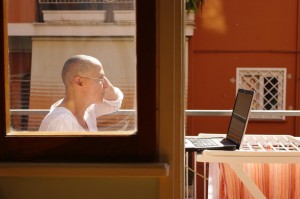
Paola Rolletta by Luis Abelard
The day when my friend Pigi, my oncologist, told me that I had breast cancer, I cried desperately. The first thing I did was to phone my partner to tell him this piece of news, of which I had had some premonition. And I understood that premonition really exists.
Curiously, I did not wonder “Why me?” My reaction was: “This cursed disease has hit me too!”
Perhaps some survival instinct made me articulate my feelings in this way, to ease the pain in my heart.
There are more and more of us, women between 40 and 50 years of age, diagnosed with cancer, most of hormonal origin. I must read more about the disease: until now, I have not allowed myself such reading.
First I said that I couldn’t read more about cancer until I finished this calvary of chemotherapy. Now that I finished the eight sessions, I say that I will wait to read until I have the CAT (computer axial tomography) results.
In a nutshell, I don’t want to cram on cancer because I decided to trust my three doctors, the surgeon, the oncologist and the nutritionist, to save me from this darkness.
In darkness
What shocked me most is the darkness you live through while undergoing chemotherapy. It is almost like a mirror lysergic acid experience, but instead of colourful hallucinations, they are black, like anti-matter.
Maybe it is the chemicals shot into my body during six months (eight chemo sessions, 4 FEC and 4 Docetaxel, every 21 days) that makes me see the world, inside and outside, so dark.
The darkness weighs more heavily than the hair loss, the nausea and the vomiting. This metaphysical darkness that totally grabs you is devastating: no words, gestures, musical notes or flowers. For a long time, darkness dominated my thoughts and my soul – an unnatural darkness that does not spring from disease-associated pessimism.
To find strength, I tell myself that mine is a chemical pessimism that – I hope, I trust – will save my life.
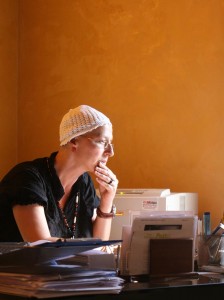
Photo: Sol de Carvalho
And I hope that radiotherapy next month will be less dark!
Feeding nitro-glycerine to my body
Earlier this year, I wanted to quit smoking and went to the naturopath for acupuncture. In her office by the sea in Maputo, Dr. Fernanda examined me and told me, without mincing words, to have a mammogram right away. Because I smoked and took birth control pills for decades, I was literally feeding a cancer with all that poison, that nitro-glycerine, she said. Just like this. Raw and cruel.
I was so frightened I took the first flight back to my home country, Italy. That saved my life! Dr. Fernanda was right, in her cruel way. Even when I did not have any symptoms, even though I had not felt any lump, she was right.
Cancer is a multi-factor disease but breast cancer is, most cases, of hormonal origin. Why these hormones go crazy and make us develop cancer it is not known yet, but that they are to blame, this is known. This knowledge is a great leap forward to cure many cancer patients and to prevent the disease.
Ten years ago I read “Illness as a Metaphor” by Susan Sontag while I was working on a documentary on AIDS in Uganda for Portuguese TV.
Ten years later, I re-read it. I tracked it down in the boxes where I stored my books when I moved to Maputo.
In the meantime, Susan Sontag died of cancer. I remember her, wearing a green dress, in a photo taken by her lover Annie Leibovitz.
Every day I repeat to myself Sontag’s call to realism: cancer can be treated with chemotherapy more efficiently than with diets or psychotherapy. Sontag unpacked beliefs that have fed the popular mythology about cancer up to these days.
Every day I repeat her words in the introduction: illness is the night-side of life, a more onerous citizenship.
The disease that has hit me contains, paradoxically, an element of reassurance: every day I must face a new day, a daily routine. Suffering serves as a mediator between my will to live and all that is threateningly unknown. But the unknown is part of life itself. It is life.
]]>A. When it is shown in a pornographic magazine, film or website.
B. Never.
C. When it is emailed to government officials urging action to improve public health.
One could argue about A and B but this blog is [...]]]>
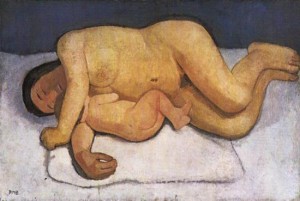
By Paula Modersohn Becker
When is a photo of a woman giving birth considered pornographic? Take your pick:
A. When it is shown in a pornographic magazine, film or website.
B. Never.
C. When it is emailed to government officials urging action to improve public health.
One could argue about A and B but this blog is about C.
Earlier this year, in Zambia, Chansa Kabwela, news editor at the feisty opposition newspaper The Post, was charged with circulating pornography with intent to corrupt public morals. What was her crime? During a nationwide strike by Zambia’s miserably paid doctors, a woman allegedly gave birth without medical assistance in a hospital car park. The baby was in a breech position and later died.
Her family sent Kabwela the photos but she found them too graphic for publication. Instead, she emailed them to the vice-president and other government officials and women’s groups, urging a negotiated end to the strike to avoid more deaths.
President Rupiyah Banda found the photos “morbid and peculiar” and Kabwela, a 29-year-old mother of two, was charged with the porn offence, which carries a five-year jail sentence. The state argued that giving birth is sacred in Zambia and the photos were disrespectful.
If giving birth is so sacred, why was the woman delivering in a car park?
Good sense prevailed and in November a judge acquitted Kabwela.
The Post has long been harassed by government for exposing corruption. This court case is one more instance, using birth, women and tradition as a cover to erode press freedom.
A very famous Christmas birth
This being the season of a famous birth, on the other side of the world, in New Zealand, a mischievous billboard about the immaculate conception has angered Catholics. 
It shows Joseph and Mary in bed. She looks blissful; he looks dejected. The kicker: “Poor Joseph. God is a hard act to follow.”
The twist is that the originator is an Anglican archdeacon who commissioned an ad agency to produce a Christmas poster. The archdeacon argues, somewhat confusedly, that the purpose was to highlight that Christmas is about love, not about Mary’s impregnation by God.
Within hours the billboard was defaced with brown paint. Well, at least this is better than rioting over caricatures of the Prophet or charging an editor with pornography.
Giving birth is charged with cultural meaning: it can be sacred, pornographic, joyful, “eculiar” or offensive. For half a million women, every year, it is deadly.
Yet these deaths do not spark the same outrage as a billboard or photographs.
My wish this Christmas is quite simple: safe delivery for women everywhere, not in a car park and not in a manger, neither holy nor unholy, whether through sex, artificial insemination or immaculate conception. Just safe.
***
Read about why maternal mortality remains so intractable here and about midwives in India.
]]>I will call her Gabra (gift, in Amharic), for our conversation was private. I met her at a monastery near Lalibela, the mystical city of [...]]]>
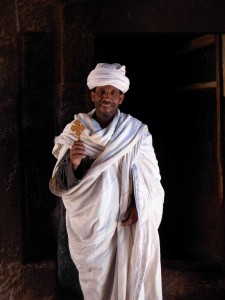
Patriarchal in all senses. By M. Sayagues
What drives a 17-year-old girl to enter a monastery? Today she is 30, and still happy about her choice. Her eyes sparkle and her laughter comes easy. She exudes peace.
I will call her Gabra (gift, in Amharic), for our conversation was private. I met her at a monastery near Lalibela, the mystical city of rock-hewn churches in northern Ethiopia.
Monastic life has a long tradition and prestige in the Ethiopian Orthodox Church. The oldest monastery dates from the 6th century. A monastic renaissance between the 13th and 16th century brought great moral and political authority to clergy.

Custodians of tradition
Gabra’s rock-hewn monastery dates from the 12th century. Her room is excavated in the pink tufa rock. Two built-in-the-rock platforms, covered with a thin mattress, do as couch and bed. An old cupboard holds a few plates and cooking utensils, three of the long green robes worn by Ethiopian peasants, the white headscarves that nuns wear, and two pairs of sandals.
For income, she and her fellow nuns weave cotton and silk into diaphanous shawls, sold at the monastery. She rises before dawn to pray – the first of daily seven prayers. Her ambition is to study theology in Addis Ababa or in Lalibela.
Gabra is not completely cut off from the world. She has a cellphone and a radio. On Sundays, relatives and friends visit.
Choices
I ask her if marriage and children ever interested her.
“It is a privilege to be single and not to have children,” she says softly, smiling but firmly. She sounds relieved.
Unmarried myself, I agree that motherhood and marriage are just one option. I understand the spiritual call, the peace of contemplation and withdrawal, of a simple lifestyle unencumbered by material things.
Yet I wonder if female genital mutilation had to do with her decision.
In Ethiopia’s eastern region, a girl might suffer genital cutting between the age of 15-17, before marriage. Her clitoris would be cut, sometimes the labia.
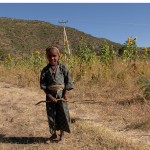
She has a right to her bodily integrity.
In Somali region, she would have infibulation at a younger age: the complete removal of her genitalia and, to preserve virginity, being stitched shut with an acacia thorn, leaving only a hole to urinate.
About three-quarters of women in Ethiopia between 15-49 have suffered some form of genital mutilation, said a government survey of 2005. The practice is fading – but too slowly, say activists.
It is not called mutilation for nothing. Sex and childbirth will be extremely painful and dangerous.
If finding a husband means suffering genital cutting, a hard mattress in a rock-hewn room is a much better place than a king-size wedding bed.
Gabra did not speak English, my male guide spoke little, and sex topics are taboo in Ethiopia, so the conversation went in another direction. Gabra was curious about my life, my work, and my daughter. 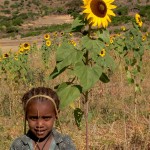
“Would you want to live like me?” she asked. “I don’t think I could,” I said. “But I feel the beauty of this simplicity.” She smiled.
Ethiopia looks and feels ancient and spiritual. Social cohesion is remarkable. But the same lifestyle that makes ferenji (foreigner, in Amharic) wax lyrical about the “biblical landscape and people” binds women to painful and dangerous traditions.
Some traditions are simply annoying. Women cannot join the rites if they are menstruating, ergo unclean. At no time of the month can women, local or foreign, enter the most sacred chapel of the Lalibela complex, Bete Mikael, where King Lalibela is buried. We are only allowed a glimpse from the door. In some monasteries, no females, including of the animal kingdom, are allowed.
Monastery visitors take leave at 5 PM (international time; in Ethiopian time, 11 in the night). I make my way down the stony path, the tufa rock glowing pink and gold in the sunset.
I am thinking that the monastery – the spiritual world – may be a blessed refuge from the hardship of being born female in a deeply patriarchal world.
Read recent IPS stories about genital cutting in Uganda, Sierra Leone and cross-border in West Africa.
]]>